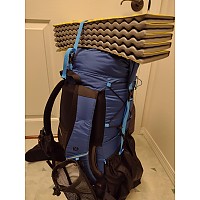Patagonia Ascensionist 55L
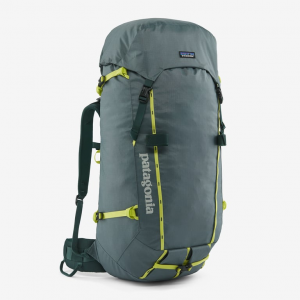
Pros
- Waterproof polyurethane finish
- Extremely durable fabric
- Modular straps remove easily
- Completely recycled construction
- Removable hip belt and frame sheet
- Good ice axe carrying system
Cons
- Places weight on user's shoulders
- Not made for mountaineering weight
- No access to items in the bottom of pack
- Hurts my shoulders

I want badly to love this pack, but just can’t. I expect a little better from Patagonia. Patagonia made a good backpack when they made the original Ascensionist 35. I’ve had mine for a few years and it's my favorite small pack. Having made three trips with this new 55-liter version I just can’t bring myself to like it over my Gregory Alpinisto 50 (a comparable pack) for anything more than really light mountaineering trips.

Best use: This is a climbing pack. I’m not saying that it can’t be used for an overnight hike to the lake someplace, but for those trips there are lots of better options. This is not a “one pack to rule them all” bag.

From Patagonia: “The Ascensionist 55 fits into Patagonia’s line of technical daypacks as a mid-weight option for extended climbing missions in technical terrain. Daisy chain loops accommodate the necessary climbing gear for multi-day day excursions in the high-alpine.”

Testing Conditions: I wore this pack to Glacier Peak for three days with a full complement of mountaineering gear. I also carried the Ascensionist to Mount Adams with a much lighter gear load for a two-day trip. Because I felt like the pack was a tad undersized frame-wise, I had my wife carry it on a three-day backpacking trip where she carried all the food for me, herself, and our six kids, a load of about 45 pounds.
Modularity: Probably the best part of the Ascensionist is how easily the buckles and tensioning straps can be moved almost anyplace on the pack. Straps and buckles are all girth hitched in place to the loops that are all over this pack. There are literally dozens of configuration options.

Don’t like a strap? Move it where you want it. It almost reminds me of the military MOLLE packs. If your pack is stuffed like a cooked sausage you can place the straps where they’ll be the best to lash your gear to the outside. When you have the Ascensionist stripped down for summit day you can cinch the pack down tight to keep it compact and snug to your back as you climb
Durability: The material on the Ascensionist is really tough. I had zero worries that crampons, ice axes, or rocks were going to do anything to the fabric of this pack. The ripstop material with its waterproof coating make it feel like rubberized canvas. The bottom of the pack is reinforced with thicker, rubberized material to protect it when you set it in the rocks.

Waterproof: I don’t usually get to be picky about the weather I climb in. Having the Ascensionist be waterproof makes life so much better in the mountains, especially when my sleeping bag, puffy jacket, and mid-layer are all down which is notorious for its poor performance when wet. Wearing the Ascensionist in rain was no problem. I also never had to worry leaving it outside my tent at night during questionable weather.


Comfort: This is really the biggest fault I found with this pack.
When they sized it up to 55 liters they did not make it capable of carrying the weight that the volume of the pack could hold. The shoulder straps put a LOT of pressure on the top/front of my shoulders, causing some decent soreness and bruising. Thinking that it was an issue with my torso length I had my much smaller wife carry it and she ended up with bruising and sores in the same spots.
This pack is hard to adjust so the weight is borne on your hips where it belongs and the shoulder straps are left to bear the brunt of the weight. Both of us bore the weight of most of our gear on top of our shoulders, just in front of the shoulder socket. After day one of the Glacier Peak trip I dreaded shouldering the Ascensionist from the soreness it caused.
I have a 20-inch torso and I informed Patagonia of this when I ordered the pack. Every size "Large" pack I have tried up to this point has fit me just fine. I'm 5' 10" which makes me on the lower end of average height for an adult man.

On Mount Adams, where I didn’t have to carry a rope, harness, crevasse rescue equipment, spare shoes and a lot less other gear/food, the Ascensionist was just fine. If I never carried more than 25 pounds of gear I probably would like the Ascensionist a lot more and I’d have a lot fewer pain-reinforced memories of carrying it.
Stability: The good thing was, even when I was carrying a heavy load and my shoulders were hating me the pack didn’t wobble or flop around. I found that the suspension system kept the pack secure while I hiked or climbed.
Ease of packing/unpacking: The packs upper “brain” was handy for items I needed occasionally and the internal small zipper pouch held my wallet and keys just fine. Other than that however, if you want your gear you have to unbuckle the brain, possibly remove your climbing rope and go digging in the single main bag section. Hopefully you remembered to leave your rain shell someplace near the top or you’ll end up doing some fishing to find it.
Again, where the Ascensionist shines is that you can remove and place the tie-down/compression straps almost anywhere on the pack and attach skis, a snowboard, your rope or crampons where YOU want them, not where the designers decided that you should. I always try to refrain from hanging a lot of crap off my pack but when I have to it is SO SO SO nice to have the option of placing straps where I need them.
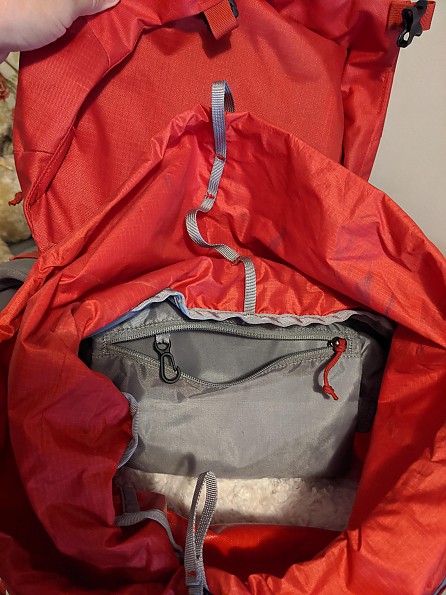
Weight: The Ascensionist weighs 2lbs, 13.2 oz. which is pretty good. It’s a savings of 9 ounces over the Gregory Alpinisto, which has a slightly smaller claimed volume, though I think the Alpinisto is a superior pack.
Features: I know I already mentioned it but the option of being able to add or remove straps all over the pack is fantastic.
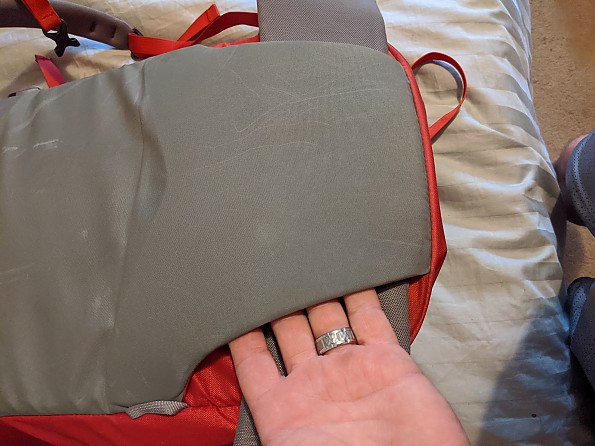
The hip belt has a gear loop for climbing gear because the belt will probably make it hard to access the ones on your climbing harness when you wear it. If you’d prefer not to have the hip belt altogether you can easily remove it as well.
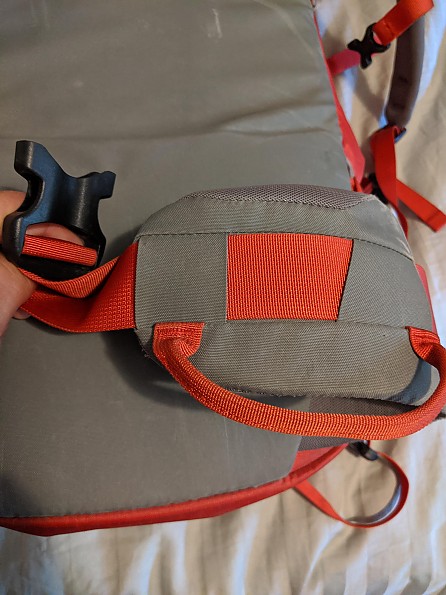
The frame sheet and aluminum stays can also be removed to further streamline the pack for summit pushes and the frame sheet makes a great seat pad when it is removed.
The ice axe retention system is one of the better ones out there. I have had axes fall off my pack and lost them forever on other packs.

Fit: I initially thought that the Ascensionist was too short in the torso for me, but after my much smaller wife wore it and had the exact same problems as me I decided it was just the pack itself, probably the shoulder straps or the angle they impact the shoulder. I’m no rookie backpacker and I know how waist belts, shoulder straps, load lifter straps, etc. are supposed to fit but, try as I could, I could not keep the Ascensionist from hurting my shoulders until I lowered my pack weight drastically.
Conclusion: The modularity, durability, and light weight of this pack are great features. Unfortunately, if I can’t comfortably carry enough gear in a pack for a full-on mountaineering trip I can’t really recommend it over the other options out there.
Background
I climb volcanoes in the Pacific NW and backpack to alpine lakes.
Source: received for testing via the Trailspace Review Corps
(Sample for testing and review provided by Patagonia)
Your Review
Where to Buy
You May Like
The Ascensionist 55L replaced the Patagonia Ascensionist 45L.
Specs
| Price |
Current Retail: $289.00 Historic Range: $93.73-$289.00 |
| Weight |
1,280 g / 2 lbs 13 oz |
| Volume |
55L / 3356 cu in |
| Dimensions |
26 x 12.5 x 7.5 in |
| Body |
5.8-oz 420-denier 100% recycled nylon ripstop |
| Collar |
2.2-oz 70-denier nylon ripstop with a silicone coating |
| Lining |
3.3-oz 200-denier 100% recycled polyester |
| Other |
Body fabric is certified as bluesign approved |


